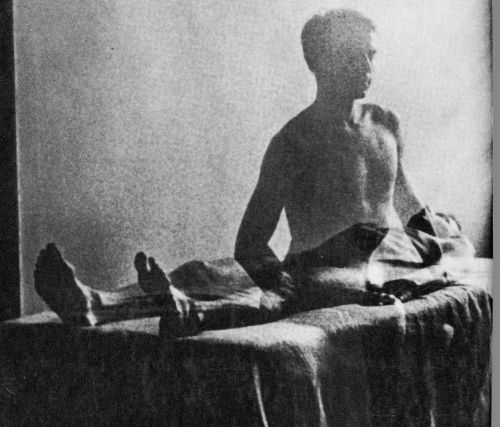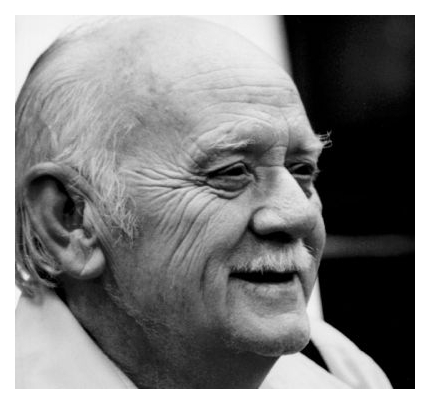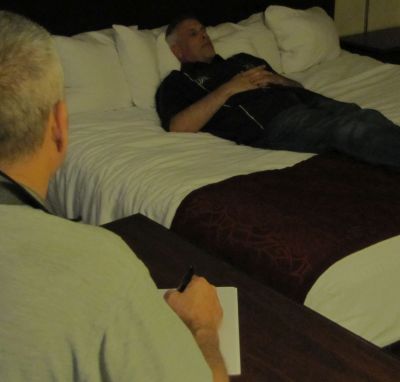 (Featured photo: Detail from cover of Journeys out of the Body, by Robert A. Monroe.)
(Featured photo: Detail from cover of Journeys out of the Body, by Robert A. Monroe.)
Every so often I am asked: “Have you ever had an out-of-body experience?”
That is one of those $64-billion-dollar questions (they used to be $64 thousand, but, like the deficit, that has grown…). If the reports from some folks are right, you can have an out-of-body experience (or ‘OBE,’ also known as ‘astral projection’ or ‘autoscopy’) and not even know it – say, for example, when you’re sleeping. Of course, that’s guaranteed to instantly raise a skeptic’s hackles. After all, what a perfect dodge that would be: You could claim to have a mystical sort of experience but, when asked for evidence, just say you don’t remember anything about it because you were asleep, so it must have happened!
But this isn’t about skeptics, and in any case, there are plenty of folks who report OBEs during which they were consciously aware, or at least seemed to be.
Over the years since remote viewing (RV) became widely known, folks have often puzzled over whether remote viewing is the same as or different from an OBE. One inquirer wrote me saying, “[RV] is a form of astral projection . . . If you can do an astral projection, you can do remote viewing.” I wanted to say, “Well, how do you know it’s not the other way around?” After all, maybe astral travel is just a form of remote viewing, and if you can remote view you can astral travel. But I restrained myself, and instead responded along the following lines:
My many years of remote viewing experience tell me that remote viewing is definitely not astral projection or OBE. But I don’t reject the idea that both RV and OBE may come from the same basic human ability. Think of it this way: Radio and television waves are similar in that they both come from the same electromagnetic spectrum. Despite being the “same kind of thing,” though, they give different kinds of experiences and types of information. Because they come from different places on the spectrum, radio provides an audio experience, while television provides both audio and visuals. In the same way that radio and TV are related but different, then, perhaps OBE/astral projection and remote viewing come from different places on the same “ESP spectrum,” so the experiences they provide are related, but different as well. If so, what are those differences?
First, the presumptions behind remote viewing and OBE/astral projection are different. Those who experience astral projection usually assume that some “part” of their person literally travels out into the universe, into an alternate dimension, or into some other aspect of reality. Remote viewing, on the other hand, assumes that no part of the person “goes” anywhere, but that some mechanism of mind simply perceives the experiences and information while the viewer remains quietly at one physical location. (This is one reason it is referred to by many as a form of “nonlocal knowing.”)

was coined to describe his experiences. (Photo
courtesy F. Holmes Atwater.)
Second, the subjective experiences are different. The classic OBE/astral travel account focuses on the sensation of transcending one’s body. To the experiencer, it “feels like” his or her bodyless self literally travels to the scene (or “locale,” as OBE pioneer Robert A. “Bob” Monroe termed it) for a visit, and may even seem to have the ability to interact in limited ways while there.
In properly-done remote viewing there is no impression of leaving one’s body, nor is there any sensation of “departure.” Remote viewers are completely aware of staying fully within their own bodies, in the specific time-space location where they began their sessions.
This is true of any form of remote viewing, even so-called “extended” remote viewing, or ERV, as originally developed and performed in the military remote viewing program. In ERV one lies comfortably in a bed and relaxes, establishing an hypnagogic state–that is, mind on the verge of sleep, body totally relaxed. ERVers believe this will quiet the active mind and thin out the boundary between conscious awareness and subconscious. In theory this helps perceptions from the target flow more easily into the viewer’s mind with fewer interjections from mental analysis. But even in this state a viewer does not experience a transfer of self out of physical body. (Some might suggest that the remote viewing phenomenon of “bilocation” is a form of OBE. I think the two are different, which I shall write about some other time.)

which differs from OBE.
Third, the information-gathering value of RV and OBE is not the same. In remote viewing, both verbal data and graphic representations (sketches, clay models, etc.) are recorded as they are received, as opposed to OBE in which the information can only be captured after the OBE session is done. The remote viewer doesn’t have to try to remember all his or her experiences in a lump at the end, but records them in real time over the course of the session. In OBE, the experiencer has to wait until after the experience is over to record from memory any impressions he or she receives. This leaves the perceptions vulnerable to problems typical of recalling experiences from memory, such as incomplete recall, memory distortion, and even outright forgetting.
Finally, with a few unverified exceptions, OBE/astral travel cannot be done on demand, nor can the experiencer decide where he or she “goes.” You can’t just “decide” to have an out-of-body experience. You have to take it when it happens. Further, you can’t decide where you “go,” but simply end up where the whims of the universe take you. On the other hand, a well-trained remote viewer will almost always “go” where directed. The value of this from an information-collection perspective is obvious. If you happen to be an intelligence analyst or a police detective, and you can’t count on your sources to bring you information from the time and place you need it, there’s no point in them bringing you information from some other place they visited at random.
None of this means that either RV or OBE is better or worse, only that they are different and might be better at different things. Astral travel/OBE is fine with me, and I encourage anyone who wishes to attempt it to go ahead and try. Maybe experimentation will find a way to make it work for some of the same uses as RV, though Bob Monroe and others found this problematic.
Don’t forget, descriptions of OBE/astral travel have been around for millennia. So when Ingo Swann coined the term “remote viewing” in 1971 while working in Dr. Karlis Osis’s laboratory, he was perfectly aware of the paranormal literature on astral projection and OBE. Indeed, some of Ingo’s earliest experiences as a child were OBEs. The ESP experiments he was recruited to perform in Osis’s lab were to test for OBEs. It was in response to those experiments that Ingo invented the remote viewing protocol. He meant the term “remote viewing” to refer to a specific activity, performed within a certain experimental framework, which he felt was distinct from any out-of-body experience or astral travel. If anyone knew the difference, he did.
So there you have it: Are remote viewing and OBE/astral travel the same? Apparently not. Does it make a difference? Almost certainly. Are they related? Definitely maybe.
By the way, as far as I know I have never myself experienced anything I could identify as an out-of-body state, so I conclude I haven’t had any OBEs. . .unless, of course, I had them while I snoozed.